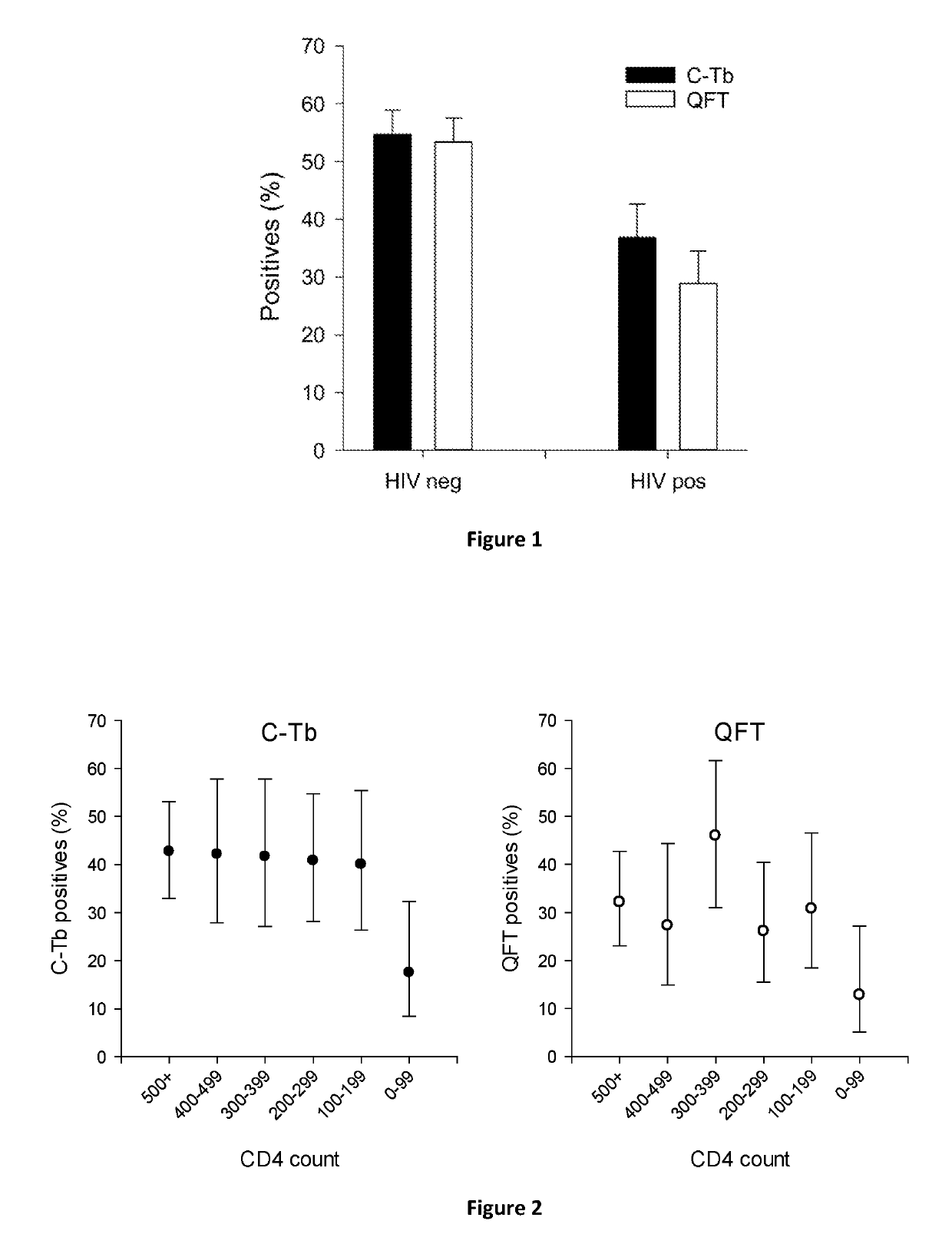Skin Testing for Tuberculosis in Immunocompromised Persons
a skin testing and immunocompromised person technology, applied in the field of mycobacterium tuberculosis antigens, can solve the problems of high mortality, long and complex treatment, severe tuberculosis of tb, etc., and achieve the effect of reducing sensitivity
- Summary
- Abstract
- Description
- Claims
- Application Information
AI Technical Summary
Benefits of technology
Problems solved by technology
Method used
Image
Examples
examples
[0064]The diagnostic agent C-Tb was prepared by cloning, fermenting and purifying recombinant versions of the two antigens rdESAT-6 and rCFP-10 from Lactococcus lactis. The antigens were mixed in equimolar amounts of ESAT-6 and CFP-10 corresponding to a 1:1 w / w ratio of rdESAT-6 and rCFP-10 in a vehicle of phosphate buffered saline (PBS) with 0.01% Polysorbate 20® (and 0.5% phenol)
[0065]The diagnostic performance of C-Tb, PPD and an IGRA named QuantiFERON®-TB Gold In Tube (QFT) were compared in a phase III trial in infants and children less than 5 years of age with suspected Mtb infection, and in older children and adults with suspected TB disease. The trial of 1190 participant included 299 HIV positives and 730 HIV negatives. Blood for QFT testing was collected prior to skin testing. C-Tb and PPD were injected double blind into separate arms in a randomized, split body design. Results from the volunteers with paired results available were included.
[0066]As evident from FIG. 1, C-Tb...
PUM
| Property | Measurement | Unit |
|---|---|---|
| volume | aaaaa | aaaaa |
| w/w | aaaaa | aaaaa |
| w/w | aaaaa | aaaaa |
Abstract
Description
Claims
Application Information
 Login to View More
Login to View More - R&D
- Intellectual Property
- Life Sciences
- Materials
- Tech Scout
- Unparalleled Data Quality
- Higher Quality Content
- 60% Fewer Hallucinations
Browse by: Latest US Patents, China's latest patents, Technical Efficacy Thesaurus, Application Domain, Technology Topic, Popular Technical Reports.
© 2025 PatSnap. All rights reserved.Legal|Privacy policy|Modern Slavery Act Transparency Statement|Sitemap|About US| Contact US: help@patsnap.com

